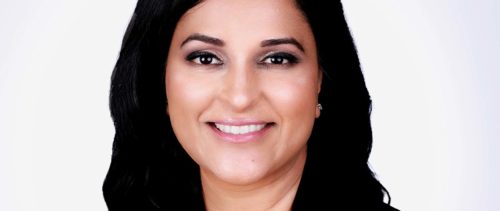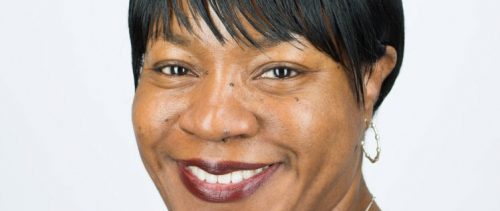- The Expert View
HOW TO MEASURE DIVERSITY AND INCLUSION IN THE WORKPLACE
Creating a diverse and inclusive workforce has been central for many companies over the last few years but knowing how to measure the success of a diversity or inclusion program can be a challenge.More Questions
We asked the industry experts...
How to measure diversity and inclusion in the workplace?

Nick Basannavar
Social & Cultural Historian, Head of Consulting at Included
On diversity data, some organisations are getting better at gathering current state ‘snapshots’ across major characteristics such as gender, age, ethnicity and race. Whilst these are critical, we need to start thinking about characteristics more broadly, factoring in sexual orientation, socio-economic difference, neurodiversity, and much more.Know more about Nick Basannavar →
By accounting for the key recruitment, promotion and retention trends and forecasts, organisations can better understand what they will look like in three, five and ten years’ time.
Diversity is only one part of the picture, and very few organisations are adequately measuring inclusion. Most organisations undertake engagement surveys and pulse surveys that offer limited insights and little that is actionable. However, it is more effective to test concepts such as psychological safety, transparency and micro aggressions.
In this way we can pinpoint the behaviours that contribute to, or detract from, greater inclusion, cut by geography, function, demographic and other categories. This allows organisations to allocate resources to areas that will have the most impact.

Anu Mandapati
Global Diversity, Equity & Inclusion Leader and Executive Coach
Diversity is easier to measure than inclusion. Diversity data is usually collected during the hiring process. Diversity is about representation. There are over 30 dimensions of diversity. Most organizations, however, look at their data through one dimension of diversity such as gender, ethnicity, sexual orientation, disability etc. We must look at the data through an intersectional lens to truly assess where we are, so we can then determine the necessary actions we will take to get to where we want to be. We must dig into the data to look at how these dimensions intersect and ask "Is there further marginalization in our organization?" Some intersectional examples include Black women, transwomen, men with a disability who identify as LGBTQ+ and neurodivergent Millennials. When we look at how these dimensions intersect we can better understand the experience of our employees and what we need to do to create a more inclusive culture for all.Know more about Anu Mandapati →
Inclusion is usually measured through quantitative data from an employee engagement/satisfaction survey. While this method is most often used due to time efficiencies, many employees experience survey fatigue or some don't feel their survey responses will be truly confidential. This results in fewer people completing the survey. So creating opportunities to also hear qualitative feedback is important. Organizations can leverage confidential focus groups, small townhall listen and learn sessions, and smaller team meetings to hear anecdotal feedback. Combining both the quantitative and qualitative data can then provide a more holistic picture of how included your employees are feeling.

Priya Radia
Associate Consultant, Included
Collecting, analysing, and applying insights from data has become a key element of successful businesses in the past decade; similarly, it brings a number of benefits to a strong D&I programme.Know more about Priya Radia →
Think about measuring data with regards to the past (to help assess which initiatives worked and which didn’t), the present (to assess where the current biggest gaps are to define more targeted interventions) and the future (to support setting time-bound targets that help track progress).
Measuring diversity can include basic demographics such as gender or ethnicity, but think about other non-mandatory characteristics such as cognitive diversity, or socio-economic background too. Diversity statistics alone will limit the comprehensiveness of interventions – measuring inclusion will give you an indication of how particular groups actually feel.
To measure inclusion, think about behaviours, your definition of culture, and capture elements such as perceptions of psychological safety, trust, and belonging.
When measuring either diversity or inclusion, give careful consideration to communications and phrasing of questions to make sure people feel comfortable disclosing sensitive information.

Fiona Daniel
Founder, CEO, Non-Exec Director
There are the obvious things but the best measure as to how diverse and inclusive you really are, is to ask your people, all your people.Know more about Fiona Daniel →
It is always a good place to start by asking yourself 'What are we wanting to move from and to?' 'What is your baseline?' Review your data both quantitative and qualitative. Surveys done well and communicated well are always useful to measure both diversity and inclusion.
The diversity survey should include how people identify across a range of characteristics where legally acceptable to do so. Inclusion surveys should focus on feeling like you belong, being able to speak up, promotions are fair, pay is fair, feeling respected, valued, supported etc.
Another tip is to take a view from your leaders too as often they get forgotten and they will see things differently than those they lead.

Chelsea C. Williams
Workplace & Career Strategist, International Speaker, Founder & CEO of College Code
Diversity and inclusion must first be defined and universally understood before attempting to measure.Know more about Chelsea C. Williams →
When measuring diversity and inclusion, organizations must consider quantitative and qualitative data part of the broader storyline.
Further, measurement should focus on outcomes & impacts over inputs and outputs, which may be perceived as "performative."
Related Questions
ASK OUR EXPERTS
Headspring is a joint venture between the Financial Times and IE Business School established in 2015. Our highly influential FT journalists deliver a unique perspective on the events that shape the world of business, and our IE faculty brings an entrepreneurial mindset with a sharper edge and greater impact through technological immersion and a culture of innovation.